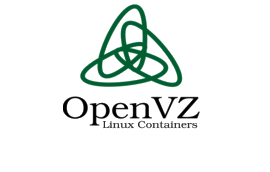
Mention containers, and therefore the first word that involves mind nowadays is “Docker.” But container technology is much bigger than Docker alone, and it covers more use cases than simply delivering and running apps.
One of the first major proponents of container technology on Linux, OpenVZ — or Virtuozzo in its commercial edition — Mondoze is releasing a OpenVZ Container VPS replacement version of its container solution, packaged as a full-fledged Linux distribution.
One Kernel, many VMs
OpenVZ is actually a modified Linux variant — this version uses the Red Hat Enterprise Linux 3.10 kernel family — where multiple containers, or virtual private servers/virtual environments (VPSs/VPEs), can share one kernel.As a result, Linux is that the only guest OS that may run under OpenVZ in an exceedingly container. That said, those containers will be booted quickly and run without the overhead of a full-blown hypervisor.
The commercial edition of OpenVZ, called Virtuozzo (also the name of the corporate marketing the product), incorporates OpenVZ but adds enterprise-grade features not found within the open source release. Virtuozzo includes a new release of its own alongside OpenVZ 7, named — appropriately enough — Virtuozzo 7.
Most of the large changes announced in OpenVZ 7.0 involve the packaging and deployment of the merchandise. It’s now a whole standalone Linux distribution, with both the commercial Virtuozzo product and therefore the free OpenVZ distribution supported the identical kernel.
For those that want to run actual VMs, KVM/QEMU will be used because the hypervisor in OpenVZ. to create management easier and more consistent, OpenVZ now uses the libvirt project because the standard API for working with full KVM instances, containers, and their attached storage pools or volumes.
Doing Things The VM Way
That said, a number of the most effective implementations of these features are only available within the commercial Virtuozzo product. If you would like zero-downtime live migration, for example, you will need to purchase it. Other for-pay features include hardware-level virtualization support, integrated backup (OpenVZ only supports snapshotting), physical-to-virtual migrations, and clustering. And while Docker is functioning on a variety of live migration for its containers, that hasn’t yet made it into an officer release.
The biggest differences between OpenVZ and Docker aren’t only technological but methodological and philosophical. OpenVZ is about isolating entire running instances of an OS, while Docker provides applications with isolation, both from the system at large and from one another.
Docker’s advocates have, if anything, become stauncher over time about distinguishing VMs from Docker-style containers, with strong use cases for both. As long as that is still the case, there will be room for projects like OpenVZ to supply an alternate.

